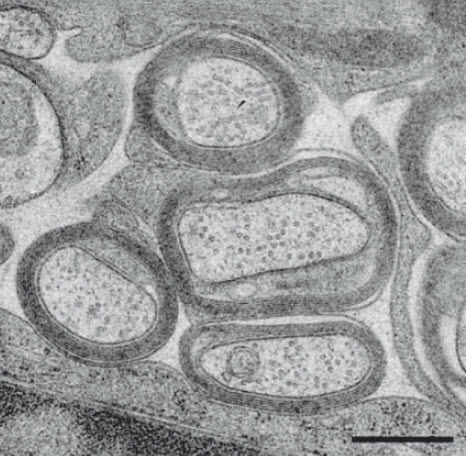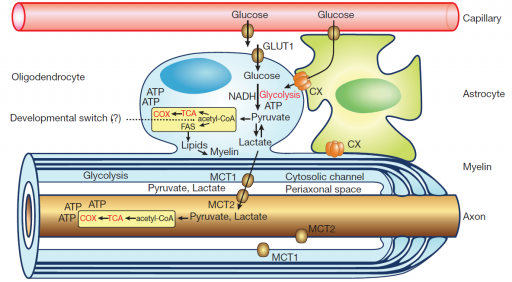Glial cells supply axon nerve fibers with energy, researchers find
May 14, 2012

Electron microscope cross-section image of the nerve fibers (axons) of the optic nerve. Axons are surrounded by special glial cells, the oligodendrocytes, wrapping themselves around the axons in several layers. Between the axons, there are extensions of astrocytes, another type of glial cells. (Credit: U. Funfschilling et al./Nature)
Max Planck Institute of Experimental Medicine researchers have discovered a possible mechanisms by which glial cells in the brain support axons and keep them alive.
Oligodendrocytes are a group of highly specialized glial cells in the central nervous system. They form the fat-rich myelin sheath that surrounds the nerve fibers as an insulating layer increases the transmission speed of the axons and also reduces ongoing energy consumption.
The extreme importance of myelin for a functioning nervous system is shown by the diseases that arise from a defective insulating layer, such as multiple sclerosis.
In a new study, the researchers showed that glial cells are also involved in providing glucose to replenish energy in the nerve fibers.

Hypothetical model of metabolic coupling between oligodendrocytes and myelinated axons (credit: U. Funfschilling et al./Nature)
This coupling of glial cells could explain, among other things, why in many myelin diseases, such as multiple sclerosis, the affected demyelinized axons often suffer irreversible damage.
Ref.: Ursula Fünfschilling at al., Glycolytic oligodendrocytes maintain myelin and long-term axonal integrity, Nature, 2012, DOI: 10.1038/nature11007